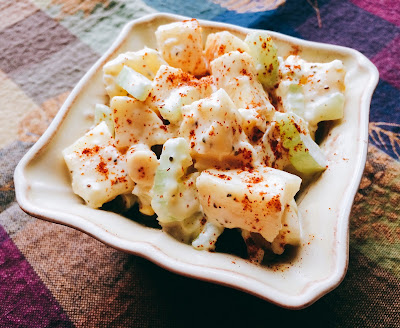 |
| Tahini with Lemon and Garlic | Source: Wikipedia |
In the 70s, a Jewish friend became animated when he learned that I had never tried falafel. We went to a walk-up window in an old section of Long Beach, California. He eagerly ordered me a falafel sandwich in pita bread pocket and drizzled with tahini sauce. After I got past the bitter surprise of the first taste, I was smitten!
To make tahini, hulled sesame seeds are pureed into a paste. It is a popular condiment in the Middle East—much like our mayonnaise and ketchup. Due to its bitterness, tahini works best with other food. It substitutes for nut butters, is used as a dip or side dish, and it partners wonderfully with roasted vegetables.
[See Roasted Cauliflower with Tahini Sauce.]
Tahini sauce is traditionally made from tahini sesame seed paste, garlic, salt, fresh lemon and parsley. It can be purchased, but as Tori Avey says, "...the flavor of homemade is fresher, creamier, and more delicate."
Falafel is a deep-fried patty or ball, usually made from chickpeas. The chickpeas are soaked and then ground up. Typical ingredients include scallions, cumin, coriander, garlic, and fresh parsley. The outer texture is like fried breading, while the inside is scrumptious and soft. Tahini and falafel were definitely made for each other.
So, now that I am a low-carber, how does this compute? Well, a tablespoon of tahini is 3.2g of carbohydrates. Once you subtract the 1.4g of fiber, the net carb count is 1.8g. This is good, but I am cautious about net carbs because a carb is still a carb. All fiber does is slow the release of sugars into our bloodstream. I play it safe by focusing on the full carb count.
Look for my next post . . . Tahini Tuna.
RESOURCES:
CLICK ON "COMMENTS" BELOW
TO WEIGH IN.
































